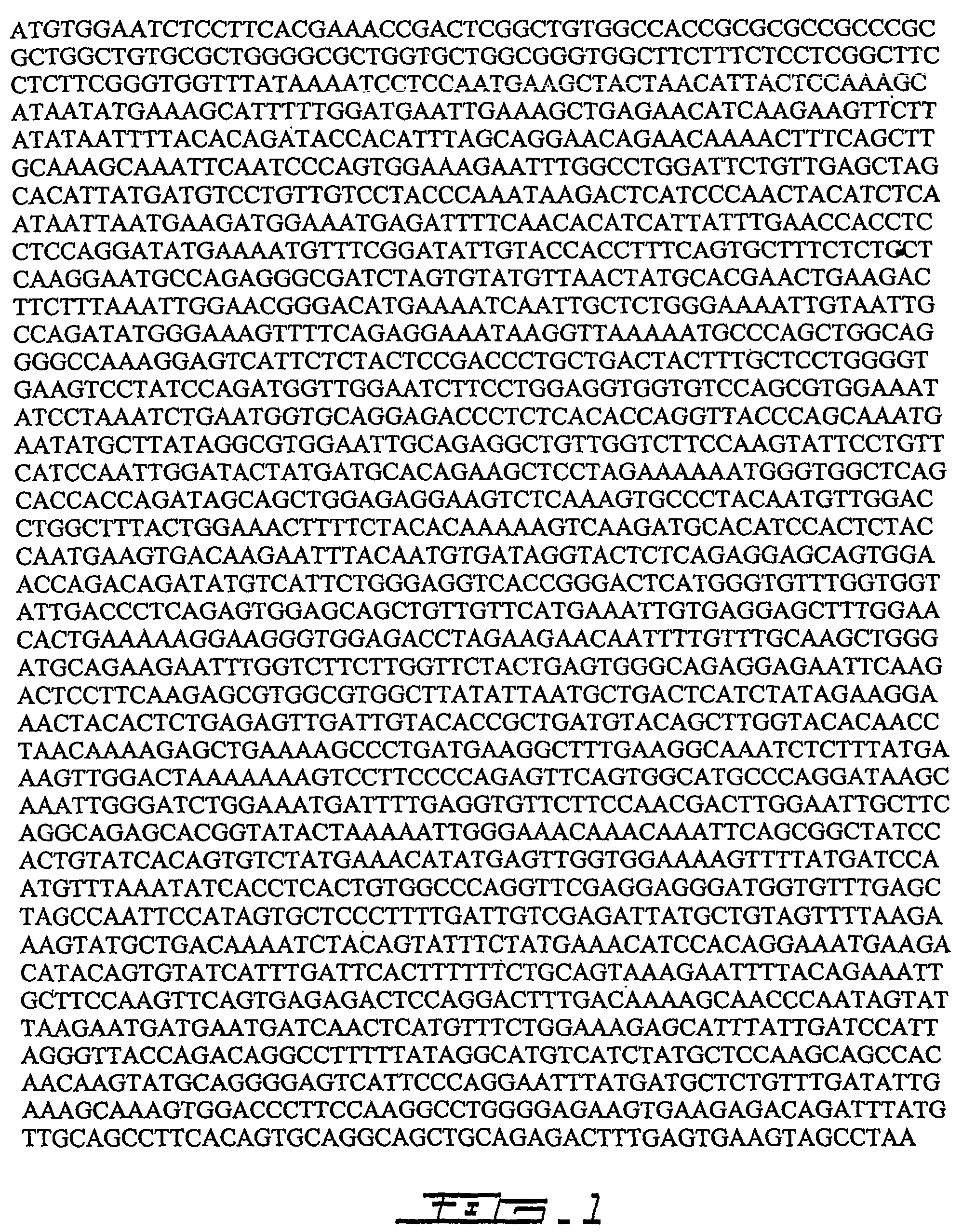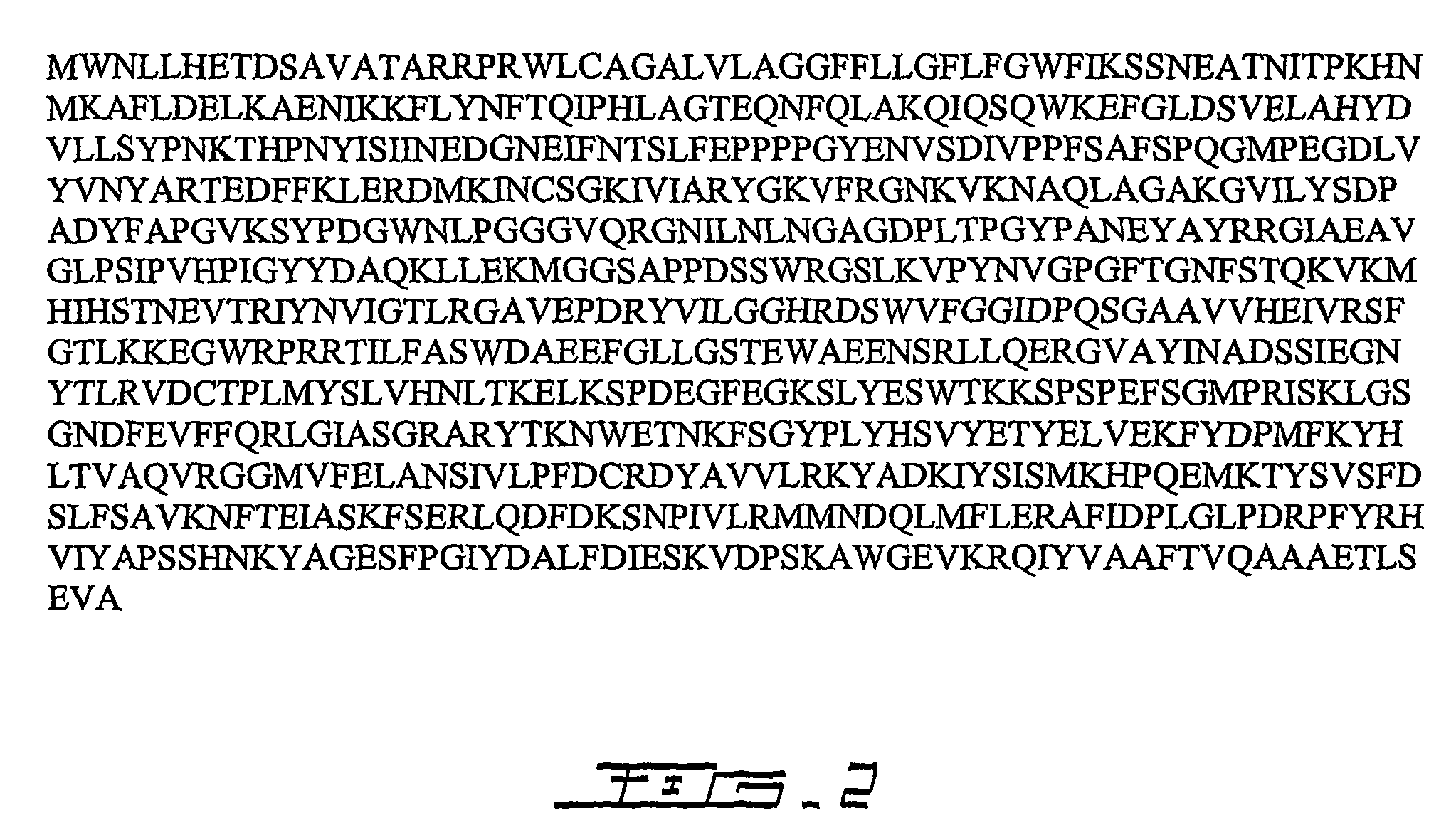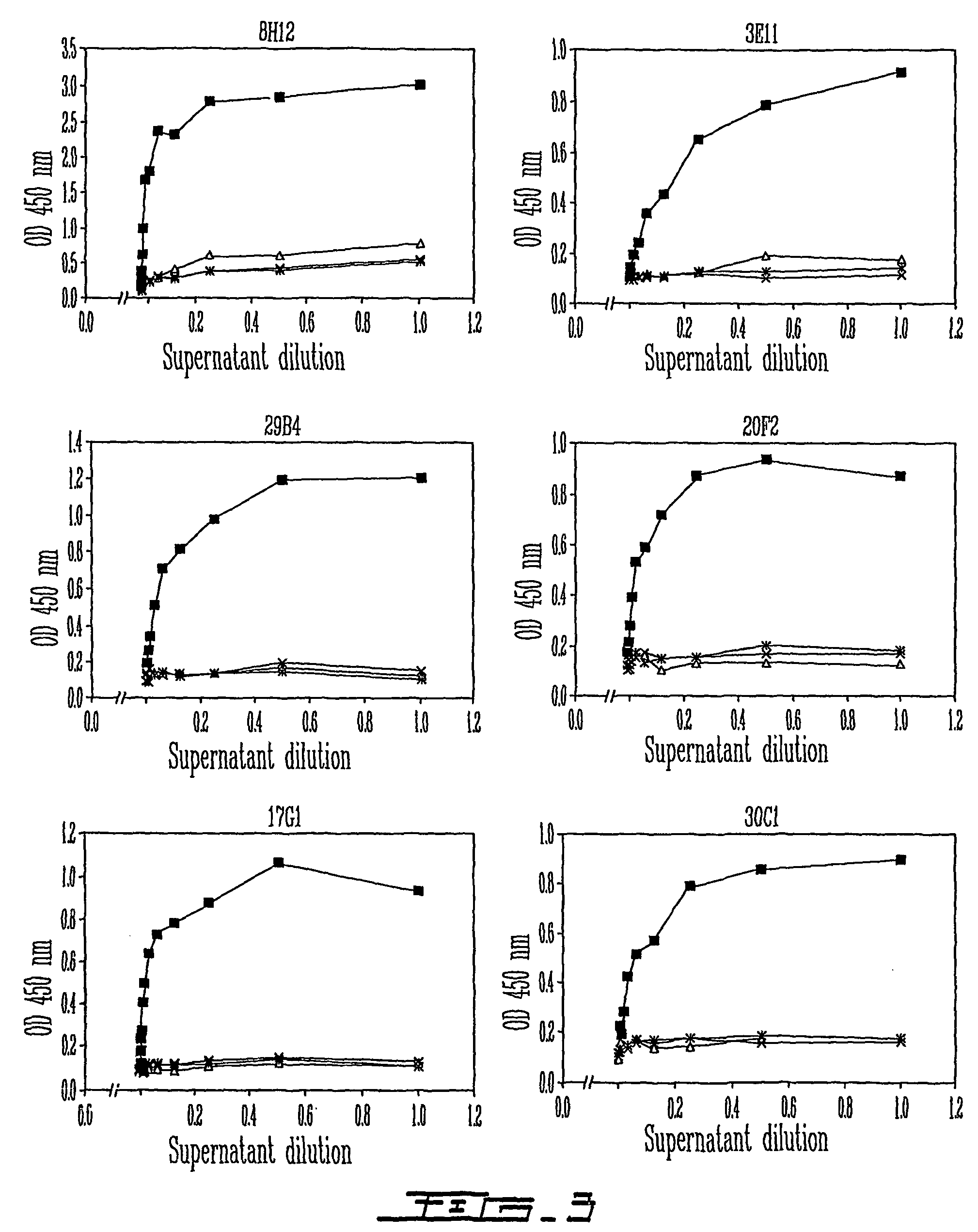Prostate cancer diagnosis and treatment
a prostate cancer and diagnosis technology, applied in the field of antibodies, can solve the problems of prostate cancer being the most common cause of cancer-related death, prostate cancer often remains undetected, and altered and subsequent loss of normal gland structure, so as to reduce, prevent, delay, suppress or arrest any symptom of the disease, and improve some symptoms.
- Summary
- Abstract
- Description
- Claims
- Application Information
AI Technical Summary
Benefits of technology
Problems solved by technology
Method used
Image
Examples
example 1
Peptide Synthesis
[0154]Example 1 relates to the procedures whereby peptides corresponding to epitopes of the extracellular domain of PSMA are synthesized.
[0155]Table 2 shows the sequence and their location within the PSMA amino acid sequence of the 14 peptides that were synthesized by solid phase F-MOC chemistry to greater than 85% purity. Each peptide was synthesized with a single amino terminal unblocked cysteine residue. This amino acid was used to conjugate each peptide to lysine residues in KLH and bovine serum albumin (BSA) carrier proteins using N-maleimide chemistry.
[0156]
TABLE 2Sequence of synthesized peptidesSEQReferenceIDNo.Peptide SequenceaLocationNO4243NH2-CNITPKHNMKAFLDELKA51-6714244NH2-CGTEQNFQLAKQIQSQWKE 85-1022PS0210NH2-CGLDSVELAHYDVLLS104-1183PS0211NH2-CFSAFSPQGMPEGD161-1734PS0212NH2-CAPGVKSYPDG236-2455PS0213NH2-CAYRRGIAEAVG278-2886PS0214NH2-CHIHSTNEVTR345-3547PS0215NH2-CGKSLYESWTKK490-50084245NH2-CASGRARYTKNWETNK531-54594246NH2-CLYHSVYETYELVEKFYD551-56710PS0216NH2...
example 2
Preparation of Monoclonal Antibodies
[0157]Example 2 relates to preparation of mouse monoclonal antibodies with specificity to the peptides of Example 1.
[0158]Several strategies were used to immunize BALB / c mice for production of PSMA-specific antibodies.
[0159]One strategy consisted of priming and boosting at 2 to 3 week intervals with peptide conjugated to KLH by one of 2 methods that link the amino terminal cysteine of the peptide immunogen to lysine residues on KLH. Peptides were conjugated to KLH using either sulfo-GMBS or SMCC conjugation systems. This strategy was designed to induce and amplify peptide specific antibodies.
[0160]A second strategy employed 2 immunizations at 2 to 3 week intervals with LNCaP membrane followed by 3 immunizations with purified PSMA or peptide conjugated KLH. Priming with LNCaP membrane should induce the production of an antibody response directed to membrane antigens including PSMA presented in a native conformation within a cellular membrane. Boost...
example 3
Preparation of Cell Membrane and Purified PSMA
Cell Membrane Preparation
[0164]Example 3 relates to the purification of recombinant PSMA and cell membrane for immunization and characterization of mAb.
[0165]LNCaP cells (ATCC No. ERL-1740), PC3 (ATCC No. CRL 1435 KS62 (ATCC No. CCL 243), NMB7 (Gift from Dr. U. Saragovi) were grown at 37° C. in RPMI-1640 supplemented with 10 mM HEPES, 10% FCS, 30 μg / ml kanamycin, 200 μg / ml streptomycin, and 20 μg / ml neomycin, and 2 mM L-glutamine, under a humidified atmosphere of 5% CO2. When confluent, cells were washed with PBS and detached using 1 mM EDTA in PBS. Cells were spun down and the pellet frozen. Packed cells were resuspended in 10 volumes of ice cold hypotonic buffer (5 mM Tris pH 7.6; 2 mM EDTA) containing protease inhibitors (20 μg / ml of TLCK (Nα-p-tosyl-l-lysine chloromethyl ketone) 20 μg / ml TPCK (N-tosyl-l-phenylalanine chloromethyl ketone) and 20 μg / ml PMSF (phenylmethyl sulfonyl fluoride). Cells were sonicated using a probe sonicator ...
PUM
| Property | Measurement | Unit |
|---|---|---|
| size | aaaaa | aaaaa |
| volumes | aaaaa | aaaaa |
| volumes | aaaaa | aaaaa |
Abstract
Description
Claims
Application Information
 Login to View More
Login to View More - R&D
- Intellectual Property
- Life Sciences
- Materials
- Tech Scout
- Unparalleled Data Quality
- Higher Quality Content
- 60% Fewer Hallucinations
Browse by: Latest US Patents, China's latest patents, Technical Efficacy Thesaurus, Application Domain, Technology Topic, Popular Technical Reports.
© 2025 PatSnap. All rights reserved.Legal|Privacy policy|Modern Slavery Act Transparency Statement|Sitemap|About US| Contact US: help@patsnap.com



